The Great Outdoors
Apps and Websites that help you connect with nature/wildlife!
As we mentioned in our previous blog, spending time outdoors, even as little as 15 minutes a day, is an excellent way to take care of your mental and physical health! – We hope these will encourage you to get outside!
Leaves and paws, roots and wings, these resources cover all wild things!
Project Noah
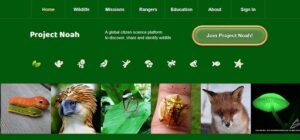
Project Noah is a fun way to explore and document wildlife. The technology platform and community provide a powerful way for research groups to collect important ecological data. The purpose of the project is to mobilize and inspire a new generation of nature lovers. It began as an experiment to see if they could build an app for people to share their nature encounters and has evolved into a powerful global movement for both amateurs and experts. The name “Noah” is an acronym that stands for networked organisms and habitats.
Website: Project Noah
Facebook: Project Noah
Seek by iNaturalist
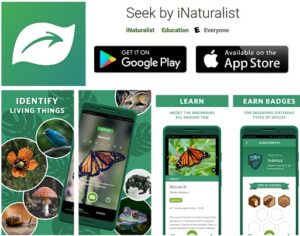
One of the world’s most popular nature apps, iNaturalist helps you identify the plants and animals around you. Get connected with a community of over a million scientists and naturalists who can help you learn more about nature! What’s more, by recording and sharing your observations, you’ll create research quality data for scientists working to better understand and protect nature. iNaturalist is a joint initiative by the California Academy of Sciences and the National Geographic Society. – Use the power of image recognition technology to identify the plants and animals all around you. Earn badges for seeing different types of plants, bugs, fungi and more!
Website: iNaturalist
Google Play Store: Seek by iNaturalist
Apple App Store: Seek by iNaturalist
The National Wildlife Federation Guide
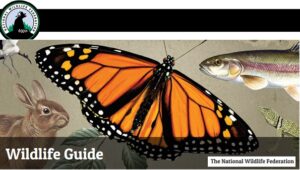
America is privileged with a stunning array of animals, plants, and wild destinations—each with its own incredible story. Get to know the amazing wildlife in your backyard and beyond.
Website:Wildlife Guide
ANIMAL TRACKS & SCAT
Animals are around us in the woods, but we often don’t know that they are there. They lurk in the thick brush, hide in the trees or are nocturnal and only come out at night. However, if conditions are right, you may stumble upon some scat or tracks that they have left behind… Here are some websites to help you identify what scat and/or tracks belong to which animal!
Here’s a great guide from Alan’s Factory Outlet showing 50 Animal Footprints found in North America!
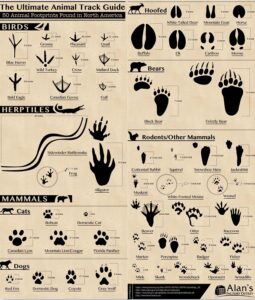
See the full version here: Ultimate Animal Track Guide

This page on the GreenBelly website gives examples of 36 common animal tracks broken down into categories such as canine, feline, hoof, bird, reptile, rodent, and more. It also gives a little information on walking patterns (such as: zig-zaggers or hoppers) and track characteristics (such as Width/Length and number of toes.)
Link: Animal Tracks Identification Guide
Animal Scat Resources:
![]() WLR Scat Identification Guide: Animal Poop Identification Guide
WLR Scat Identification Guide: Animal Poop Identification Guide
![]() North Woods Field Guide: Animal Scat Notes
North Woods Field Guide: Animal Scat Notes
BIRDS OF A FEATHER…
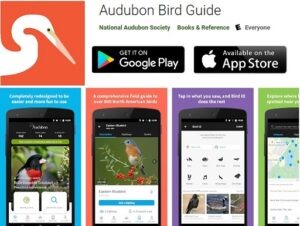
Audubon Bird Guide
The Audubon Bird Guide is a free and complete field guide to more than 800 species of North American birds, right in your pocket. Built for all experience levels, it will help you identify the birds around you, keep track of the birds you’ve seen, and see where the birds are with nearby birding hotspots and real-time sightings from eBird!
Google Play Store: Audubon Bird Guide
Apple App Store: Audubon Bird Guide
Birds Complete Reference Guide
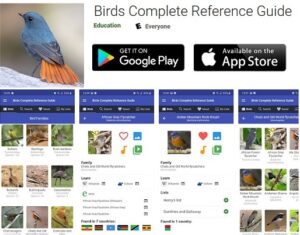
A complete birding reference app that includes songs, calls, images and videos for over 11,400 species of birds!
Google Play Store: Birds Complete Reference Guide
Apple App Store: Birds Complete Reference Guide
NestWatch

NestWatch is a nationwide monitoring program designed to track status and trends in the reproductive biology of birds, including when nesting occurs, number of eggs laid, how many eggs hatch, and how many hatchlings survive. Have you found an unidentified nest, and want to know what bird it belongs to? With a little detective work, you can determine whose nest or eggs you found with the help of NestWatch!
Website: NestWatch
The Feather Atlas
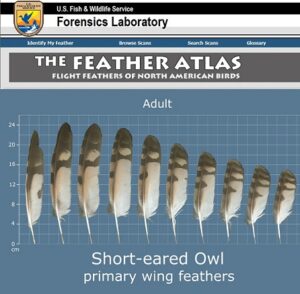
THE FEATHER ATLAS is an image database dedicated to the identification and study of the flight feathers of North American birds. The feathers illustrated are from the curated collection of the National Fish and Wildlife Forensics Laboratory. – Browse feathers, look up particular species, or identify a feather of your own!
Website: The Feather Atlas
A few other bird sources:
![]() Wild Bird Egg Identification: Wild Bird Egg Identification
Wild Bird Egg Identification: Wild Bird Egg Identification
![]() All About Birds.Org: Bird Guide – Browse By Shape
All About Birds.Org: Bird Guide – Browse By Shape
CREEPY CRAWLIES…
Pest World for kids
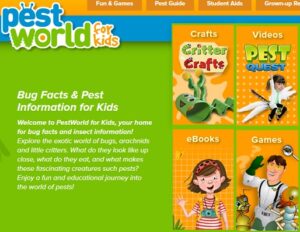
A great website for kids full of “bug” related information, ebooks, games, crafts, fun facts, and videos!
Website: Pest World For Kids
SnakeSnap
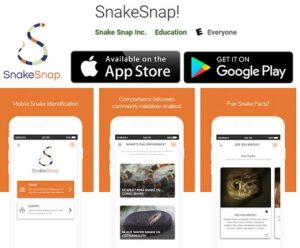
SnakeSnap is a mobile application that uses photo identification to help identify unknown snakes, and teach us about the uses and benefits these animals provide to our eco-system. Built for everyone from an avid snake enthusiast, to anyone just interested in learning more about all snake species. SnakeSnap’s mission is for everyone to learn how to co-exist with these beautiful creatures.
Google Play Store: SnakeSnap!
Apple App Store: SnakeSnap!
The Butterfly Website
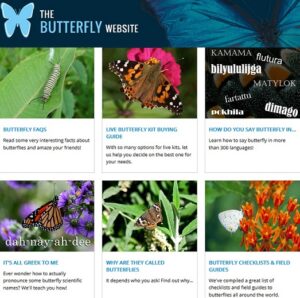
A website dedicated to our pretty little winged friends… Discover all kinds of butterfly facts, get checklists, get help identifying butterflies, learn how to say butterfly in different languages, and more!
Website: The Butterfly Website
 Check out their dragonfly website as well: The Dragonfly Website
Check out their dragonfly website as well: The Dragonfly Website
A few bee resources:

Did you know there are about 20,000 different species of bees in the world? Use these resources to learn all about bees and other stinging insects such as wasps and hornets!
![]() Stinging Insects 101: Learn the difference between bees, wasps, hornets, and more: Pest World – Stinging Insects
Stinging Insects 101: Learn the difference between bees, wasps, hornets, and more: Pest World – Stinging Insects
![]() How to identify different types of bees: Mother Nature Network – Bee Identification
How to identify different types of bees: Mother Nature Network – Bee Identification
![]() ”Sciencing”: How to Identify Bees, Wasps & Hornets: Sciencing – Bee Identification
”Sciencing”: How to Identify Bees, Wasps & Hornets: Sciencing – Bee Identification
Tick safety
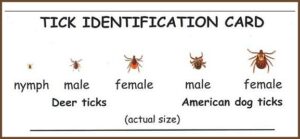
Ticks are arachnids, like spiders and mites. They are mostly found in wooded areas and the open or grassy areas at the edges of wooded areas. Tick-borne diseases have rapidly become a significant public health issue in Maine and throughout much of the United States. The incidence and distribution of these pathogens continues to increase, and can result in severe health issues for those affected. Of the multiple tick-borne diseases found in the U.S., five are known to occur in Maine, including Lyme disease, anaplasmosis, babesiosis, Borrelia miyamotoi disease, and Powassan encephalitis. All five of these diseases can be transmitted by the deer tick (Ixodes scapularis).
The following resources will help with tick protection, prevention, identification, and management.
![]() Maine.gov’s tick information page: Maine.gov – Tick Information
Maine.gov’s tick information page: Maine.gov – Tick Information
![]() Maine.gov’s downloadable tick guide: Maine.gov – Tick Identification
Maine.gov’s downloadable tick guide: Maine.gov – Tick Identification
![]() UMaine’s Cooperative Extension: Tick Lab: University of Maine – Cooperative Extension : Tick Lab
UMaine’s Cooperative Extension: Tick Lab: University of Maine – Cooperative Extension : Tick Lab
PLANTS, TREES, & FUNGI…
PlantNet
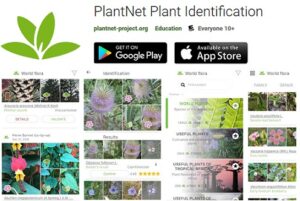
PlantNet is an application that allows you to identify and better understand all kinds of plants living in nature (such as flowering plants, trees, grasses, conifers, ferns, vines, wild salads or cacti) simply by photographing them with your smartphone. PlantNet is also a great citizen science project: all the plants you photograph are collected and analyzed by scientists around the world to better understand the evolution of plant biodiversity and to better preserve it.
Google Play Store: PlantNet Plant Identification
Apple App Store: PlantNet Plant Identification
Arbor Day Foundation’s What Tree Is That? (Online)
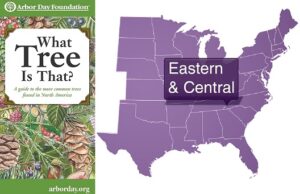
A Guide to More Common Trees Found in North America
Website: Arbor Day Foundation – What Tree Is That?
Flora Incognita
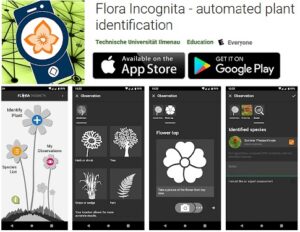
The Flora Incognita App enables you to identify plants automatically quickly, easily and accurately. In addition to the specific plant species name, a species profile page presents further information such as characteristics, distribution or protection status of the species.
Google Play Store: Flora Incognita
Apple App Store: Flora Incognita
Shroomify – USA Mushroom Identification

Mushroom ID made easy, by selecting the characteristics of the fungi you would like to identify the in-app algorithms work out the most likely matches. The app comes pre-loaded with over 400 common Fungi and over 1000 images. You can also view the ‘Top 20’ of the month which lists all the common Fungi you can find in the month you are in!
Google Play Store: Shroomify – USA Mushroom Identification
Apple App Store: Shroomify – USA Mushroom Identification
A few other fungi resources:
![]() United States Forest Service downloadable field guide: Field Guide to Common Macrofungi in Eastern Forests and Their Ecosystem Functions
United States Forest Service downloadable field guide: Field Guide to Common Macrofungi in Eastern Forests and Their Ecosystem Functions
![]() David Fischer’s Mushroom website: American Mushrooms
David Fischer’s Mushroom website: American Mushrooms
![]() Mushroom Expert website: Mushroom Expert
Mushroom Expert website: Mushroom Expert
IN THE SKY
SkySafari – Astronomy App
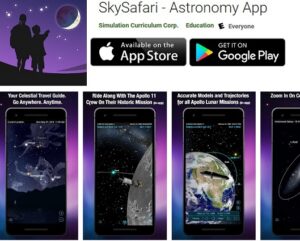
SkySafari is a powerful planetarium that fits in your pocket, puts the universe at your fingertips, and is incredibly easy to use! Simply hold your device to the sky and quickly locate planets, constellations, satellites, and millions of stars and deep sky objects. Packed with interactive information and rich graphics, discover why SkySafari is your perfect stargazing companion under the night sky.
Google Play Store: SkySafari – Astronomy App
Apple App Store: SkySafari – Astronomy App
Star Walk 2 Free – Sky Map, Stars & Constellations
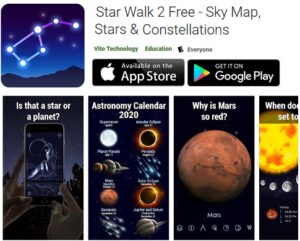
Star Walk is a great astronomy guide to explore the sky day and night, identify stars, constellations, planets, satellites, asteroids, comets, ISS, Hubble Space Telescope and other celestial bodies in real time in the sky above you. Learn a lot about the solar system, constellations, stars, comets, asteroids, spacecraft, nebulas, and more!
Google Play Store: Star Walk 2
Apple App Store: Star Walk 2
Stellarium Web
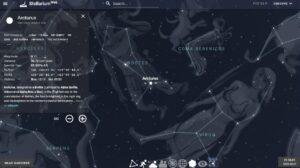
Stellarium Web is an online planetarium running in your web browser! It shows a realistic star map, just like what you see with the naked eye, binoculars or a telescope. Includes information on stars, constellations, planets, comets, satellites (such as the ISS), and other deep sky objects.
Website: Stellarium
Field Guide to Clouds

The UCAR Center for Science Education’s Field Guide to Clouds is a portable guidebook to identifying clouds. Learn about the different clouds in the sky, including how they form, how they get their names, and what they can tell you about the weather.
Google Play Store: Field Guide To Clouds
Apple App Store: Field Guide To Clouds
A few other cloud sources
![]() NASA downloadable Cloud Identification Chart: S’COOL Cloud Identification
NASA downloadable Cloud Identification Chart: S’COOL Cloud Identification
![]() Arizona Edu Lecture: Cloud Types
Arizona Edu Lecture: Cloud Types
![]() WeatherWizKids: Weather Wiz Kids
WeatherWizKids: Weather Wiz Kids
